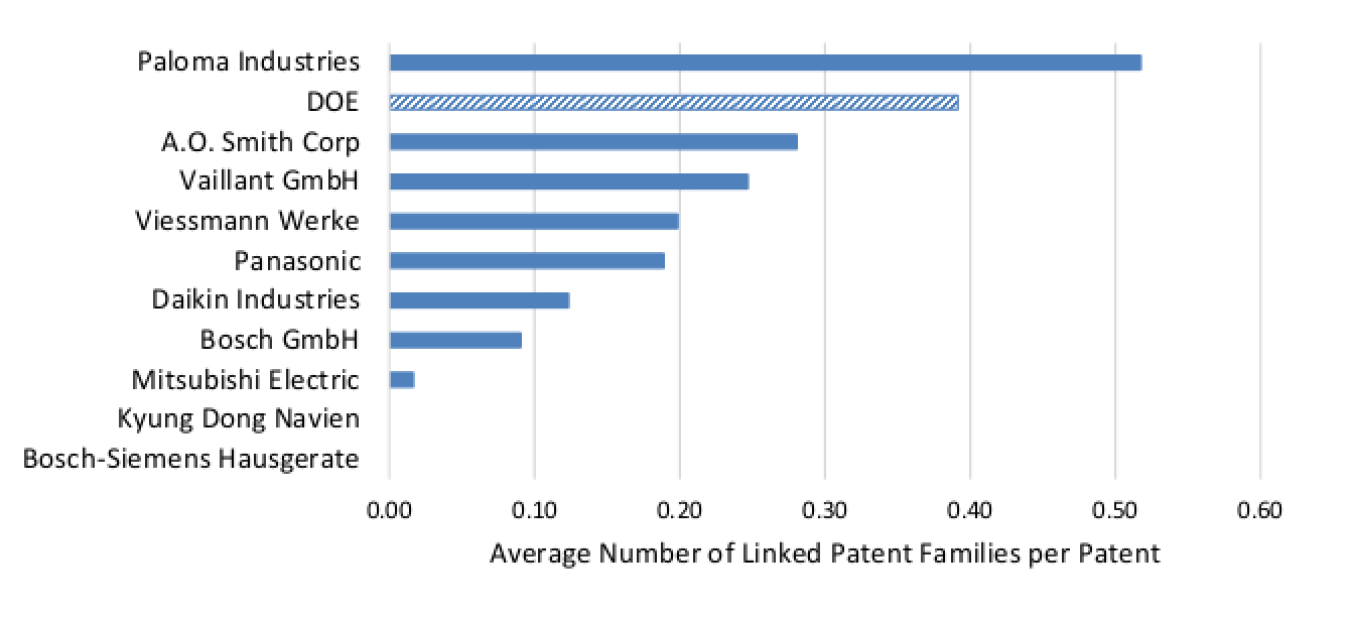Findings show that BTO funding has helped save Americans money on their energy bills and advanced fundamental knowledge in the field.
September 19, 2017BTO recently published Benefit-Cost Evaluation of U.S. Department of Energy Investment in HVAC, Water Heating, and Appliance Technology, a report conducted by Research Triangle International (RTI) that looked at the return that U.S. taxpayers have gotten from funding in HVAC, water heating, and appliances R&D. And the findings show that BTO funding has helped save Americans money on their energy bills and advanced fundamental knowledge in the field; in fact, the energy and resource benefits attributable to BTO R&D resulted in more than $20 of benefit to the United States for every $1 invested by BTO.
And that’s the most conservative finding from the report! With different assumptions of impact, discount rate, and additional health benefits included, one scenario found that BTO’s R&D could have produced as much as $261 of benefits for every $1 funded by BTO.
BTO asked RTI to take a conservative approach to ensure the most robust findings possible for return-on-investment calculations. This evaluation looked at three technologies from BTO’s HVAC/WH/Appliances program – flame retention head oil burner, advanced refrigeration, and heat pump design model and alternative refrigerants – and compared the benefits of these technologies to the cost of the entire program from 1976 - 2015. This means that the evaluation did not consider benefits from other HVAC, water heating or appliance R&D breakthroughs, of which there are many.
The evaluation found that the total electricity savings ranges between 324 TWh and 1,976 TWh for the technologies examined. This is hugely influential when you consider that the average American home consumes about 11 MWh per year – so, considering the mid-point estimate and the entire expected useful life of the technologies analyzed the total electricity savings attributable to BTO is equivalent to saving the electricity consumed annually by over 124 million homes (EIA estimated that in 2015 there were 118 million housing units in the U.S.).
In addition to electricity savings, energy security benefits were estimated by quantifying the number of avoided barrels of oil imports – resulting in 28.3 million to 79.9 million fewer barrels of crude oil imported to the U.S. thanks to BTO R&D.
The evaluation also looked at the direct and indirect impacts BTO’s R&D has had on knowledge, as quantified via a patent citation analysis. By direct impacts I mean how has R&D in one area (e.g. refrigeration) affected subsequent R&D in that same area, and indirect impacts are how R&D in one area (e.g. HVAC equipment) has influenced R&D in an unrelated field (e.g. medical device imaging).
To make sure that these knowledge benefits actually supported the quantified monetary, energy, and security benefits discussed above RTI interviewed experts familiar with R&D in the area and looked at patent citation to see how technology innovation was diffusing across the sector. The experts interviewed said BTO’s contributions to the knowledge base were the most significant factor in their assignment of credit to BTO and the research shows that BTO’s patents have been highly influential. These expert opinions were further supported by the objective patent citation analysis, which found that in two of the three technology areas explored BTO’s patents had some of the highest citation rates – for example BTO’s water heating patent portfolio is number two when stacked up against some of the leading water heating companies.
Average Number of Water Heating Patent Families of Leading Companies and DOE Linked to the Water Heating Patent Portfolios Owned by Leading Organizations

Now, I could go on, but I think it best to leave you with just a taste of the deep research and analysis contained in this evaluation. BTO is committed to using the best evidence to make decisions and evaluations like this highlight the positive track record BTO has of being a good steward of taxpayer money – and I hope the publication of this evaluation is a clear demonstration of this commitment.

